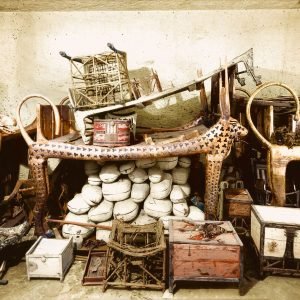When the weather starts to shift, it’s a signal to start thinking about home maintenance. Fall is more than just leaves and pumpkins—it’s the best time to prepare your home before temperatures drop. A little work now can save you from bigger problems during the winter months.
Getting your home ready doesn’t mean taking on major renovations. It’s about small, smart actions that keep things running smoothly and help you feel more comfortable indoors. From stopping drafts to checking your heating system, these tasks don’t take long, but they can make a big difference.
Cold air, rising utility bills, and surprise repairs are common issues in winter. That’s why many homeowners use fall as a checklist season. It’s the ideal time to address anything that might become a problem when the snow and ice show up. Let’s start with one of the biggest sources of heat loss in the average home—your windows.
Check for Drafts and Window Issues
Windows play a bigger role than most people think when it comes to comfort and energy savings. If your home feels chilly in some areas, the problem could be your windows. Drafts, cracks, or weak seals allow cold air to creep in and warm air to escape. You may not notice it right away, but your energy bill will.
Do a simple walk-through. Stand near your windows on a cool day and check for any air movement. You can also look for signs like condensation between panes or rattling in the frame. These are clues that something isn’t working the way it should.
If you see these issues, it may be time to call a replacement window company. New windows can help reduce energy loss, improve comfort, and make your home look more modern. Replacing old or damaged windows before winter hits is one of the best ways to avoid rising heating costs. It also gives you peace of mind when the weather turns cold.

Seal Gaps and Insulate Where Needed
After checking your windows, take time to inspect other parts of your home for air leaks. Doors, attic hatches, and gaps around pipes are common places where warm air escapes. Use weatherstripping around exterior doors and caulk to seal cracks near window frames.
In the attic, look for uneven insulation or areas where the light shines through. Proper insulation keeps the heat inside your living spaces and helps your heating system work more efficiently. It also makes your home feel more comfortable during the coldest months.
Garage doors and basement windows can also be problem areas. Adding foam sealant or thermal curtains in these spots can make a noticeable difference without spending much.
Get Your Heating System Serviced
When cold weather sets in, your heating system works harder. That’s why it makes sense to have it inspected before winter begins. A licensed technician can check for wear, clean key components, and replace filters if needed. It’s better to spot small problems now than deal with a broken furnace during a cold snap.
If your home uses a heat pump or a boiler, similar rules apply. Regular servicing helps everything run more efficiently and can help reduce heating bills. Don’t forget to check that air vents are clear and open. Blocked vents make it harder for warm air to move through your home.
You can also replace your thermostat with a programmable model. This allows better control of indoor temperatures, especially when you’re away or asleep. Small adjustments can save energy without sacrificing comfort.
Prep the Exterior of Your Home
Outside your home, there are a few simple jobs that go a long way. Start by cleaning the gutters. Leaves and debris can block drainage and lead to water damage, ice dams, or leaks. Once cleared, run water through the downspouts to confirm they’re flowing properly.
Next, check your roof. You don’t need to climb it—use binoculars or view it from the ground. Look for missing or damaged shingles and inspect flashing near chimneys or vents. If anything looks off, call a roofing contractor to take a closer look.
Trim back trees or branches that hang near your house. Strong winds and snow can bring them down. Taking care of this in the fall helps avoid damage later on.
Remove hoses from outdoor spigots and drain them. Shut off any exterior water supply lines if possible. This prevents pipes from freezing or bursting. Also, cover any exposed faucets with inexpensive foam covers for added protection.
Bring in or cover outdoor furniture. Clean and store garden tools or equipment to protect them from rust or moisture damage.
Check Smoke and Carbon Monoxide Detectors
When you start using your furnace or fireplace, it’s even more important to check your smoke and carbon monoxide detectors. Make it a habit to test them once a month and change the batteries every fall. These devices play a big role in keeping your home safe, and they’re easy to forget about.
If your detectors are over 10 years old, it may be time to replace them. Look for models with built-in battery backups for added reliability. Place carbon monoxide detectors near bedrooms and on each level of your home for the best coverage.
Also, check that your fire extinguisher is still in good condition and easy to reach. These small steps help create a safer space for everyone in the house.
Stock Up on Winter Essentials
Fall is a smart time to get your supplies ready. Make a list of what you might need—ice melt, snow shovels, extra blankets, or batteries for flashlights. If you use a snow blower, check that it’s working and has fuel.
Keep a basic emergency kit in case of power outages. Include bottled water, canned food, a first-aid kit, and phone chargers. Having these items on hand helps you stay calm and prepared during unexpected weather.
Fall and winter prep doesn’t have to be difficult. With a few simple projects, you can stay ahead of common issues and feel more comfortable during the colder months. Taking time now can help your home stay warm, safe, and ready for whatever the season brings.








